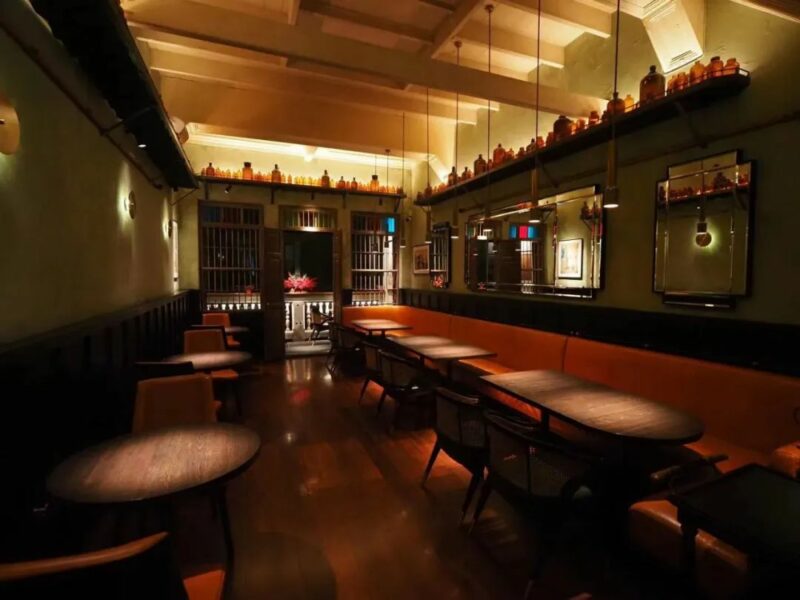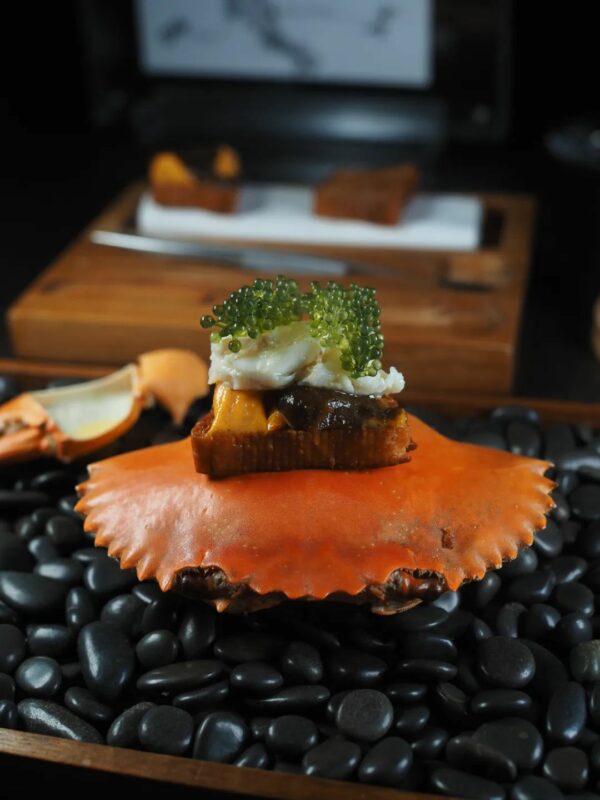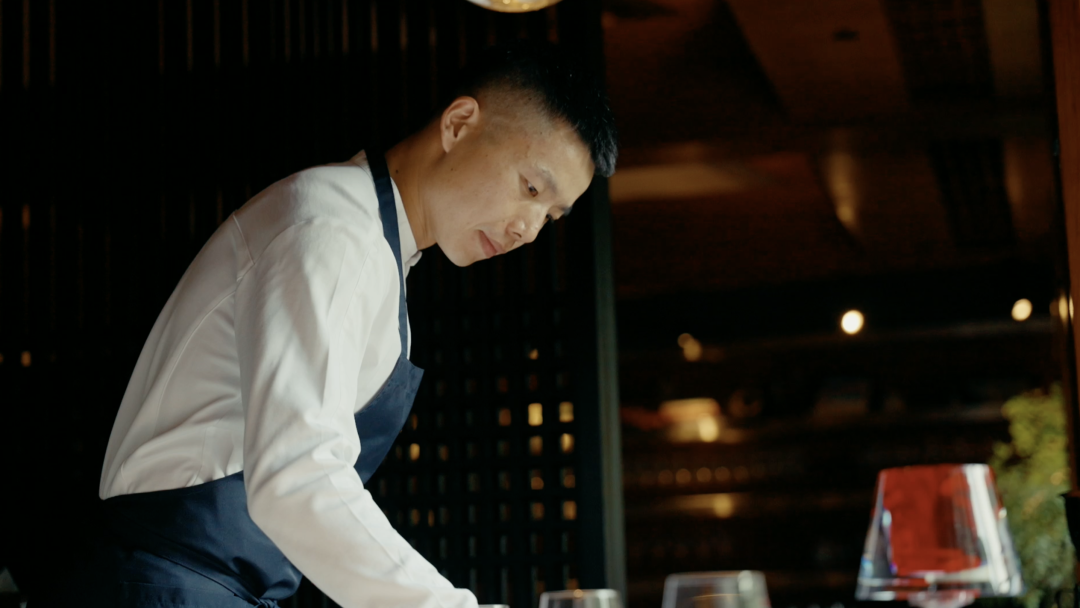Even the world around us is building more walls, globalization continues to flow through intangible things. Whether it’s the fusion of various cuisines or the subtle tweaks made to local dishes in order to bring in other culinary traditions, one can see that a new generation of chefs is creating trends – each has a story behind. Chef Pam’s fusion cuisine stems from her family background. Thai by birth, Chef Pam is the fifth generation of her family who immigrated from southern China. Chinese-Thai cuisine was her everyday diet, which also led to the creation of Potong, one of Bangkok’s most sought-after restaurants.
Chef Pam grew up in a Thai-Chinese immigrant family in Bangkok, with roots tracing back to Jinmen, Fujian. Over a century ago, her great-great grandfather opened a pharmacy in Bangkok’s Chinatown, naming it “Potong Pharmacy” after himself. The belief was widespread among the Chinese community that a humble and unassuming name would bring lifelong stability and joy. Potong (or ordinary in Chinese) thus became a blessing passed down through her family from her great-great grandfather.
YetPotong is anything but ordinary. The building is nestled in a dimly lit alley of Bangkok’s Chinatown. On the day of my visit, I even got lost and after several detours, I finally spotted the restaurant’s staff standing outside the entrance waiting for me. It’s a five-storey-tall, century-old, narrowly-arranged building. Looking up, one can see the pharmacy’s original logo; its ancient reliefs have guarded the family for over a hundred years. Now, in the hands of Chef Pam, the pharmacy has transformed into one of Bangkok’s most sought-after restaurants. The building, after renovation, continues to intrigue visitors with an air of enigmatic charm.
 @tatlerasia
@tatlerasia
Chef Pam learned the techniques of Chinese-Thai cuisine from her mother, who loves cooking and hosting banquets, which elevated her culinary taste and fostered a lifestyle of enjoying food with friends. Having embarked on a career in cooking after high school, Chef Pam later arrived in New York to continue her journey at Culinary Institute of America and honed her skills working at Jean-Georges for many years. However, Chinese-Thai cuisine remains in her genes. She describes the dishes at Potong as leaning more towards Thai, with slightly spicier flavours and a different choice of ingredients compared to Chinese cuisine.
The interior of the restaurant preserves the contours of the original building, allowing the modern style to coexist with ancient embellishments. Walking into it would be like traveling back to grand old times. Start with a homemade kombucha at Sino Bar at the first floor, its interplay of sweet and sour flavours is utterly refreshing. Then take the lift to the fourth floor, where various sausages and spices fill the air with the ambiance of a traditional dried goods store. The staff serves grilled sausage slices and pan-fried radish cakes, evoking familiar Chinese flavours. Looking up at the ceiling, one can spot the words “Min Sheng Jin Men,” indicating the early Thai-Chinese community’s emphasis on “roots.”In the 20-course Tasting Menu, each dish embodies Chef Pam’s 5-Element philosophy of “Salt, Acid, Spice, Texture, and Millard Reaction”.

The menu begins with an array of dishes that showcase the versatility of palms (or sea coconut). Featuring various parts of this ingredient, the dishes include brioche made from palm meat with rich cashew nut paste. The intense nutty aroma and smooth texture offer a feeling of tasting foie gras. Crispy on the outside and chewy within, the deep-fried palm sesame ball is part of a series of hors d’oeuvres that, while intended to stimulate the appetite, bring to mind the indulgence of petit fours with their interplay of sweet and savoury flavours. Adding a touch of fun, the waitstaff then presents a comic booklet narrating Chef Pam’s team searching for the palm ingredient.
 Fried palm sesame ball
Fried palm sesame ball
The yin-yang noodle is a signature dish that draws inspiration from a classic Chinese-Thai dish Rad Nah. Infused with squid ink, the black and white noodles are topped with a layer of white vinegar jelly to cut through richness, complemented by finely chopped morel mushrooms. Crowned with a spoonful of caviar and drizzled with creamy pig bone broth, the dish is finished tableside with freshly grated egg yolk and shrimp roe. The umami flavours are exceptional, offering a delightful taste that lingers, leaving one savouring every memorable bite.
Another dish features blue crab with mud crab emulsion and black pepper jam. The blue crab meat is sweet and plump, while the mud crab’s rich, buttery roe is spooned into one side of the crab shell, with a delightfully sweet black pepper jam on the other. Served with golden, crispy brioche, the umami of the mud crab complements the aromatic and spicy black pepper jam – a new take on the classic “black pepper crab” dish.

 Yin-yang noodle
Yin-yang noodle
Blue crab with mud crab emulsion and black pepper jam
 14 day 5-spiced aged duck
14 day 5-spiced aged duck
Roasted duck brain / duck heart
Sichuan pepper duck / egg custard /scallion
When Potong opened, I was curious about how it will present Chinese-Thai cuisine. Although many people have different opinions on the term “fusion”, it doesn’t need to be so complicated. It may be the immigrant roots of Pam’s family, or the environment itself, which is a melting pot of different cultures. Sometimes the best answer is no answer at all.
A year after the pandemic, a glance across Asian dining scenes reveals vastly different circumstances, yet Potong requires three months in advance to book a table. Chef Pam has just been crowned Asia’s Best Female Chef 2024, becoming undoubtedly a leading figure among the new generation of female chefs. With solid skills and a resolute character, Chef Pam is intelligent, full of charm and very nice to talk to. She truly embodies the legacy of her family.
When talking about the current trend of new Chinese cuisine, Chef Pam believes the new generation of chefs has brought in global perspectives which naturally will come to shape their culinary concepts. While hoping to see more creative expressions, she also believes that cooking cannot be feigned; it can only be done with sincerity. So when time changes, there is always something worth fighting for. Chef Pam has already found it, which is clearly stated on the sign above her restaurant entrance: Potong is the reason for everything.
 @tatlerasia
@tatlerasia
Photo: Peray Hsiao/Instagram










